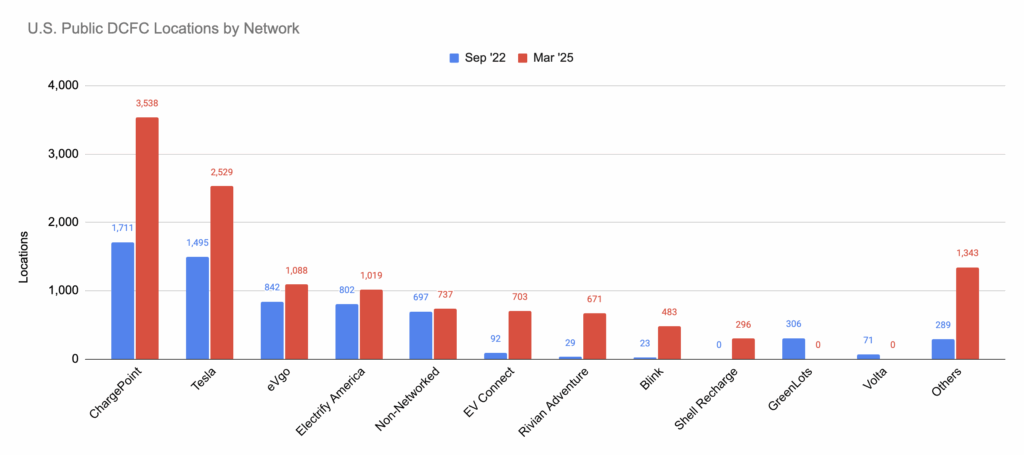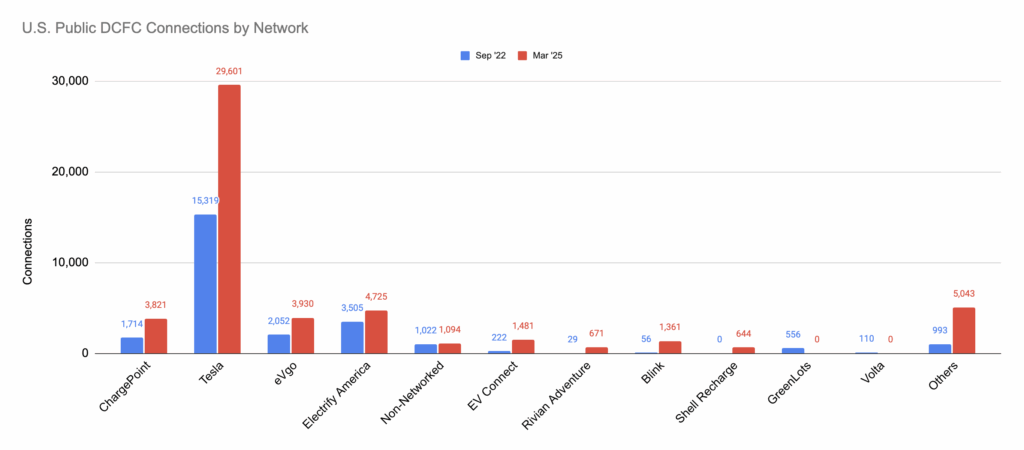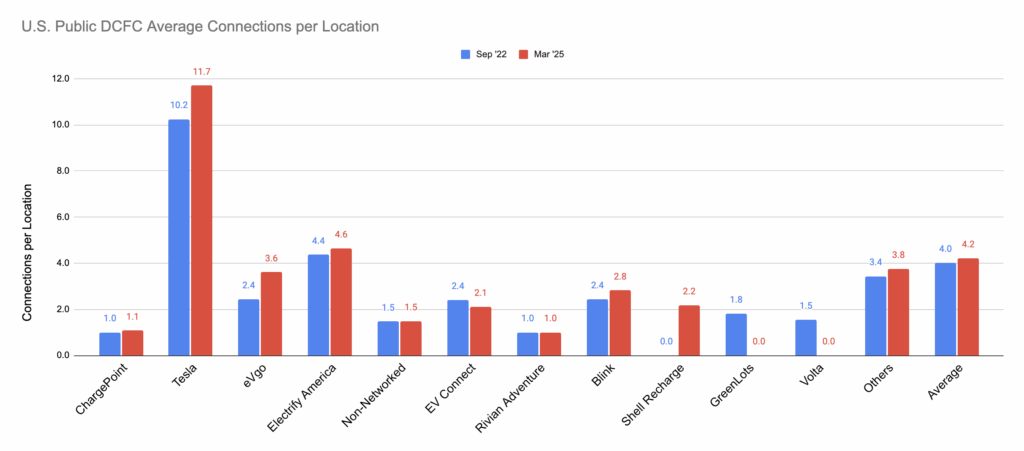A number of automotive manufacturers, charging equipment manufacturers and charging networks have announced they will support, and/or change their product's charging connection to NACS (North American Charging Standard).
This article was updated in June 2025.
Tesla coined the term, NACS, in late 2022 to rebrand the then-Tesla exclusive EV charging connection used on all Tesla vehicles sold in North America, and to announce it was opening the charging port design to other manufacturers. All other vehicles in North America use the SAE Combo connector, except for a few that use the Japanese CHAdeMO connector (Nissan LEAF and Mitsubishi Outlander PHEV). Aptera was the first manufacturer to adopt the NACS connector for their autocycle, and then in May, Ford announced they would adopt the standard (with an adapter provided for vehicles built with a SAE Combo port).
NACS has several advantages over SAE Combo and CHAdeMO:
- The connector is smaller, taking up less space on the vehicle body
- The cable connection is lighter than SAE Combo and has no moving parts to break
- The connection can carry twice the power of SAE Combo
- The Tesla Supercharger network has more deployed ports and is growing faster than SAE Combo networks (2025 update: the gap has probably closed on this.)
- The Tesla charging experience is seamless and third parties adopting it should follow suit with a plug to charge implementation

The main disadvantage of NACS being proprietary (not a standard), has been settled with the Society of Automotive Engineers (SAE) announcing they will standardizing NACS. There are currently more SAE Combo locations, but they have fewer (often one) plug. More locations means less distance between chargers while more plugs at a location decreases the likelihood of all plugs being in use when the next user arrives or shortens the wait time if all are in use. Both SAE Combo and NACS use the CCS protocol to exchange information and control the charging session.
The Tesla Supercharger experience (when driving a Tesla) is seamless, requiring just a single step of plugging in the car. Payment is handled automatically with no user input required. Tesla simply charges your credit card on file with them. Charging a non-Tesla that supports Tesla Supercharging, either via an adapter if the car has a CCS port, or via a native NACS connector, require a Tesla account and manual start-up of the charging session in the Tesla app. My Polestar 3, for example, supports Tesla Supercharging via an adapter and the in-car navigation (Google maps) will choose from both Tesla and non-Tesla DCFCs to create an optimal route.


